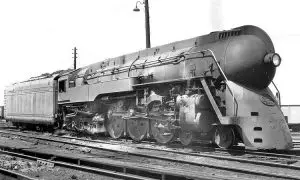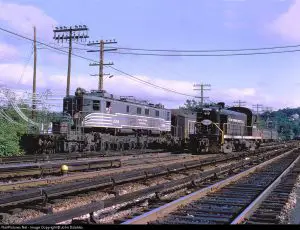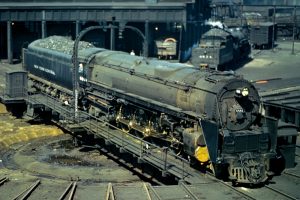Background
Cornelius “Commodore” Vanderbilt, was one of the most prominent figures of the 19th century. His life began as humble, born into a Dutch family of farmers, Vanderbilt started working at the young age of 11 on the family farm after quitting school. He also worked for his father who operated a cargo boat that brought goods from Staten Island to Manhattan. These early work experiences molded his hard working character, and helped him become a prominent businessman. Because Vanderbilt quit school at an early age, he was not adept in his writing abilities, as he had trouble printing his own name. For many years, other prominent businessmen looked down on Vanderbilt as primitive, this caused many other elites to view Vanderbilt as uneducated and unfit. As a young child, Vanderbilt had stellar athletic ability and was very competitive. He competed in horseracing and rowing, and oftentimes used his father’s periauger, with the sails down.
Even though he was born many years before the invention of the steam engine, Vanderbilt was quick to realize its potential. He utilized the new invention first in the shipping industry, where he took advantage of its abilities. Vanderbilt was a firm believer in laissez faire economics, which employs the ideal of business transactions free of government control. He often employed these tactics as he oftentimes took matters into his own hands, instead of waiting for the courts to settle issues. In 1863, he realized the benefits of rail travel and the profits that could be made with his business expertise. Many believed that Vanderbilt put his own greed ahead of serving the public, however, although he was a lucrative negotiator and undermined his rivals, he was a fair businessman.
Vanderbilt married Sophia Johnson(his first cousin) and the daughter of Nathaniel Johnson and Elizabeth Hand and had 13 children:
Phebe Jane Vanderbilt (1814-1878)
Ethelinds Vanderbilt (1817-1889)
Eliza Vanderbilt (1819-1890)
William Henry “Billy” Vanderbilt (1821-1885)
Emily Almira Vanderbilt(1823-1896)
Sophia Johnson Vanderbilt (1825-1912)
Maria Louisa Vanderbilt (1827-1896)
Frances Lavinia Vanderbilt (1828-1868)
Cornelius Jeremiah Vanderbilt (1830-1882)
George Washington Vanderbilt (1832-1836)
Mary Alicia Vanderbilt (1834-1902)
Catherine Juliette Vanderbilt (1836-1881)
George Washington Vanderbilt II (1839-1864)
Shipping Industry
In true entrepreneurial nature, Vanderbilt wanted to start his own shipping business at the age of 16. He asked his parents for a loan of $100 to buy a small vessel, and began bringing travelers across the Hudson River. In about a year, he was able to repay the money back to his parents, and make over $1000 for his family. This marked only the beginning in his entrepreneurial ventures.
As Vanderbilt matured, he became increasingly interested in the steamship industry. To gain experience, he worked with a steamship company owned by wealthy businessman, Thomas Gibbons, and learned the tricks of the trade. Gibbons had asked Vanderbilt to captain his steamboat line between New York and New Brunswick, New Jersey. This was the only time in his life that he partnered with someone, instead of being self employed, however, he kept his business running on the side. He worked for the steamship company until the late 1820’s and decided it was time he went out on his own. He was entering a highly competitive market but found success due to his knowledge and experience in the industry.

Vanderbilt entered the highly competitive route from Philadelphia to New York. Many of his competitors became bitter rivals and often engaged in fare wars. Vanderbilt’s competition was intimidated to the point where they would pay him not to compete with them. He was also known as a resilient negotiator, who was aggressive when discussing business ideas. He found success in his venture by focusing on passenger amenities that were not available on other ships and charging less than his competitors.
During the gold rush of the early 1850’s, ships played a significant role of bringing gold seekers west, as this was pre-transcontinental railroad, the only other travel option was by way of wagon. Vanderbilt entered this market with his competitive prices and shrewd negotiation tactics. He became a prominent pioneer in transporting gold seekers to the west, charging prices lower than his competitors and providing more amenities.
Vanderbilt designed his route to pass through Nicaragua, instead of through Panama, making the travel time quicker and cheaper than his competitors. Due to this, he was able to earn $1 million dollars a year ($26 million today).
During his tenure in the shipping industry, he earned the title of “Commodore” for his swift business knowledge, and his successful ventures.
Influence on the Railroad Industry

At age 70, Vanderbilt saw the railroads as a blooming industry and began shifting his focus on the growing railroad system. With his negotiating tactics, he swiftly gained control of a few railroad companies between New York and Chicago. Vanderbilt changed how the railroads operated, as he improved efficiency by developing a coherent timetable instead of having different schedules for different regions, different rolling stock, and different operating procedures. Vanderbilt acquired the New York and Harlem Railroad, New York Central, Lake Shore and Michigan Railway, and the Hudson River Railroad.
Acquisition of Railroads
In 1849, Vanderbilt began involving himself in the growing railroad industry, and began buying stock in the New York and New Haven Railroad, and shortly thereafter, became the director of the company. During this time, Vanderbilt became involved in the New York & Harlem Railroad, whose lines went from lower Manhattan to Chatham, and eventually became director. Vanderbilt had become interested in the financially stricken New York & Erie Railroad, which operated between Buffalo and Jersey City. Vanderbilt loaned the railroad $400,000, and in 1859 joined the New York and Erie board of directors.
Vanderbilt soon realized that some individuals involved with his railroads that he thought he could trust, were instead attempting to li
ne their pockets. Robert Livingston Schuyler, who was the president of the New York & New Haven Railroad, illegally created 20,000 shares of the New York & New Haven stock. Schuyler kept these profits for himself and pocketed $2 million. Vanderbilt went to court to settle the issue and took nearly two years to come to a resolution, and the court ruled that the railroad was contracted to its agents agreements.
Vanderbilt still had more legal turmoil with Schuyler. After Schuyler’s death, it was made apparent
that he had exceeded the level of capital on the New York & Harlem stock. Vanderbilt had paid $93,000 of the $1 million loan that he had purchased, and was seized by Schuyler, resulting in legal turmoil where Vanderbilt was not receiving the credit for making the payment. A few years later the issue was resolved by the courts, giving Vanderbilt some of the payment owed and was given three board seats on the New York & Harlem as collateral. Vanderbilt eventually received $100,000 from the New York & Harlem with interest and vowed to have the railroad earn $650,000 in capital spanning a twenty month time frame. The $650,000 originally pledged was used up quicker than expected and a $1 million bond was issued for the corporation with a discount of 50%. Over time, Vanderbilt was focused on the common stock of the corporation, and bought small portions of the stock until he owned over 8,000 shares, in addition to the shares purchased by his brokers.
The New York and Harlem was not a large freight carrier as it only hauled agricultural products to West Chester county. The valuable portion of the line was its Manhattan properties such as its terminal. The railroad had built tracks traversing fourth avenue, with the main station located at the corner of 26th and 4th streets. The 26th street station was where trains were either powered by locomotives or horses, as trains south of 26th street were horse drawn, while trains north of the station were powered by locomotives. The locomotive hauled trains took passengers into the Murray Hill tunnel and the Harlem River to make a connection with the New York & New Haven Railroad.

Investors in the New York & Harlem had a significant return of investment when the common stock of the railroad increased because of the proposition for horse drawn railcars. The route for these cars was planned to traverse down Broadway and would be an important asset for the railroad. In April of 1863, the value of the stock rose to 50, which led many investors to sell their share of the stock and re-purchase it later at a cheaper price. Many investors missed this opportunity because the project received approved sooner than expected. On April 22, the Harlem was granted permission to proceed on the project called “The Broadway Railroad Project”. The conditions between the city and the railroad was that 10% of revenue would go to the city, and a licensing fee for the rail cars, which amassed to $25 per car. Interestingly, these horse drawn carriages prompted the formation of the ASPCA (American Society for the Prevention of Cruelty to Animals), as they ensured these horses had clean drinking water and plenty of food.
George Law, who was an investor from New York, was among the shareholders who owned stock in the project, but backed out to re-purchase. Law lost millions and began his plight in retrieving his lost monies. Law went to Albany, the capital city of New York, to persuade the corrupt political organization to help him receive the money he lost. He gave the government enough funds to pass a bill allowing Law to create a company in order to gain rights to the Broadway Line. In an unanticipated manner, Democratic governor Horatio Seymour rejected Law’s bill. This caused the stock of the New York & Harlem to rise to 100, a few days before Vanderbilt took his role as the president of the organization. Stock rose even more when Vanderbilt’s partners Augustus Schell and Addison G. Jerome joined the board of directors. Jerome was a successful stock trader and had a strong knowledge of business, and was a keen negotiator. Schell was a licensed attorney and was a fervent political figure on Wall Street. However, this rise in stock was mainly because of Vanderbilt’s association with the company, and his business ability.
During this time,investing on Wall Street was a scandalous and cutthroat endeavor. Politicians and businesses where constantly attempting to make a quick profit, and often put their own greed before the people they were to serve. Vanderbilt dealt with issues such as Daniel Drew, who fraudulently increased of the New York & Harlem stocks to line his pockets. Drew and Boss Tweed together assembled this scheme, however, Vanderbilt with his business savvy, caught wind of the scheme, and began buying every stock possible. Even among the political strife that Vanderbilt and son William dealt with, the New York & Harlem proved to be a successful venture. He established a profitable railroad, that turned a profit for the first time.
William Vanderbilt, Cornelius’ son and superintendent of the New York & Harlem, proved to be an adept manager on a railroad that was previously in shambles. William was credited for cleaning up the Harlem, and got praise for his efforts. Horace Greeley, who was an editor for the newspaper, the “Tribune”, commuted on the Harlem daily and stated:
“The Harlem Railroad this day puts its trains on a Winter
footing and we, as a paying customer, return thanks to
the managers for the excellent accommodations we have
enjoyed throughout the past summer… We lived on this road
when it was poor and feebly managed- with rotten cars and
wheezy old engines that could not make a schedule…and the
improvement since realized is gratifying” (Greeley)
Creating the New York Central
Perhaps Vanderbilt’s most important railroad investment was in the New York Central. The Harlem served as the nonstop service to Manhattan, however, it was a small railroad and did not have much room for expansion. The New York Central was led by Erastus Corning, who was an ally of Vanderbilt, and were cordial towards each other. Vice President, Dean Richmond eventually took over the NYC upon Corning’s retirement. Vanderbilt had great praise and respect for Richmond, and viewed him as a competent railroader.
After Richmond’s death, a man named Henry Keep took over the NYC. Keep had no interest in doing business with Vanderbilt and was bitter towards his railroads. Keep hindered Vanderbilt’s business by not accepting certain westbound shipments from his railroads. Vanderbilt, in his competitive and cut throat nature, decided to hinder the passing of eastbound shipments to the New York Central. New York, as a major metropolitan area, was a key market for trade and transporting of goods, of which, Vanderbilt controlled. This made Keep sell some stock in the NYC, which played a key role in Vanderbilt’s acquisition of the railroad, as he bought a few shares of the company’s stock when it became available.

The New York Central was the combination of 9 smaller railroads that operated between Albany and Buffalo. The NYC was a profitable company, as it was under able management and earned a substantial profit. However, the NYC had a turbulent relationship with Vanderbilt’s Hudson River Railroad. Because of these tensions, the NYC began to route their traffic via ferry during the warmer months, and only used the HRR during the winter, because of the frozen Hudson river. When the traffic was routed through the HRR, passengers would have to detrain and cross the frozen Hudson on horse drawn sleds.
There was turmoil on the NYC board of directors which led to the company to engage more supporters. Vanderbilt, who was now in charge of the HRR, bought thousands of stock in the NYC, as he was aiming to become a director of the railroad. Because of the vast amount of stock purchased by Vanderbilt, he received a seat on the NYC’s board. This agreement led to the NYC and HRR agreeing on how to handle through traffic.

Shortly after these shares were acquired by Vanderbilt, he was named the president of the NYC. Vanderbilt was now in control of all railroads from NYC to Buffalo, and merged the NYC and the HRR to create the New York Central and Hudson River Railroad. Vanderbilt began to build the future New York Central System by acquiring the Michigan Southern Railway, which gave Vanderbilt a passageway to the Chicago market. Vanderbilt also acquired the Canada Southern Railway, and allowed him to have access to the Canadian markets.
The Erie War
Although Vanderbilt usually won battles with rivals, his rivalry between Jay Gould and James Fisk did not work out in his favor. This dispute called the Erie war began with a disagreement between Vanderbilt, and his former ally Daniel Drew, for control of the Erie Railroad Company. Drew teamed up with Fisk and Gould, who were board members, to issue fraudulent shares of Erie stock. Vanderbilt, always looking to grow his railroad empire, unknowingly bought many of the available stock. As he bought the stock, Gould issued more stock, which caused the Erie stock to inflate. This resulted in serious financial losses for Vanderbilt, as he lost $7 million to the scheme. Gould went to the corrupt Tammany Hall political machine and greased the hands of the politicians, who made the fraudulently issued shares legal.
Legacy
Vanderbilt passed away on January 4, 1877, at his home in New York, after battling medical issues for 8 months. When he died, he had an estate worth $100 million and left 95% of it to his son William, who often accompanied his father on his various business dealings, and William’s children, Cornelius received $5 million, and William, Frank, and George each $2 million. Vanderbilt left most of the money to his son William because he believed that he would be the one to carry on his legacy. Vanderbilt’s daughters received between $250,000-$500,000, while his wife received $500,000, their home, and 2,000 shares of stock in the New York Central Railroad.
Vanderbilt, although not a devout philanthropist, gave $1 million to Bishop Holland Nimmons McTyeire, who was his wife’s cousin, to fund the construction of Vanderbilt University in Nashville, TN.
